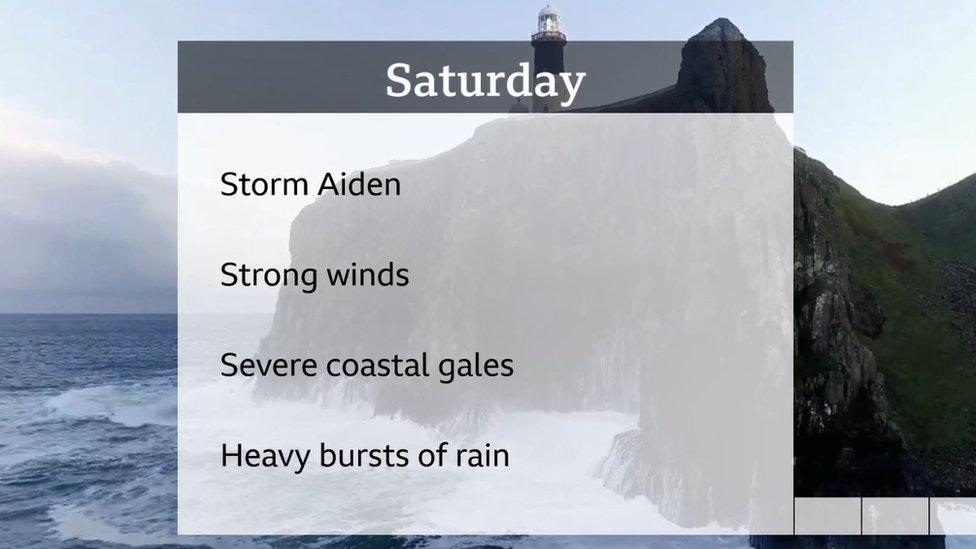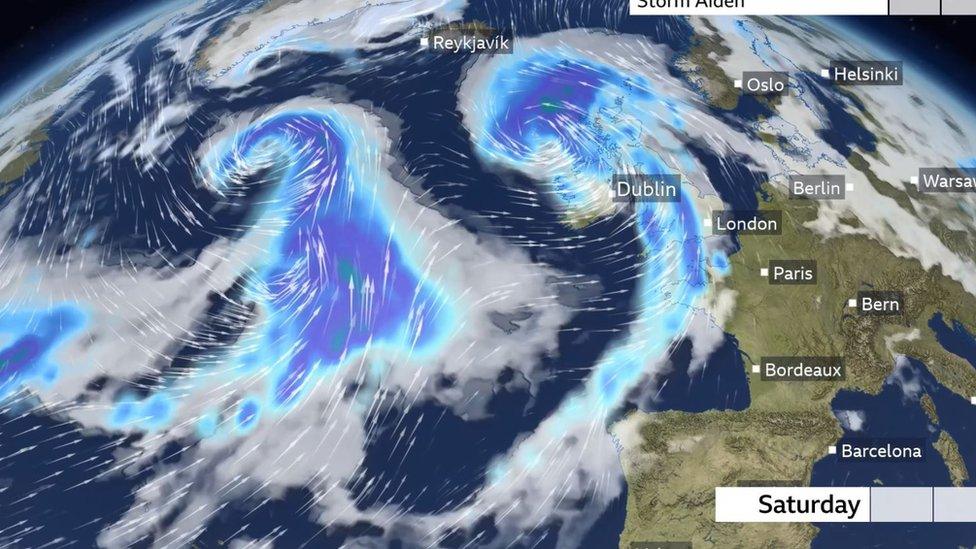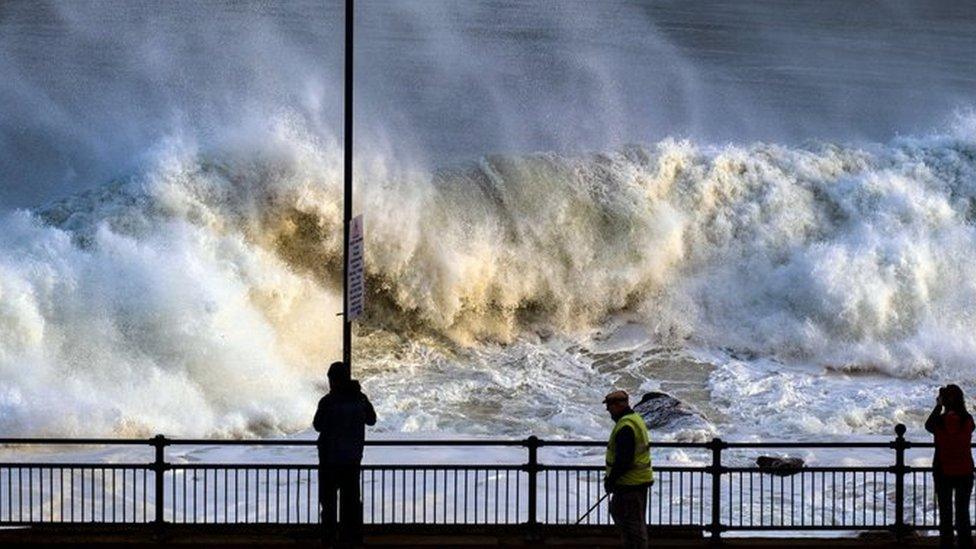Storm Aiden to bring strong winds and rain to NI
- Published

Huge waves crashed along the shore at Portstewart from the remnants of Hurricane Epsilon this week
Storm Aiden is set to bring very strong winds and rain across Ireland on Saturday.
Winds will begin to pick up overnight in Northern Ireland, with gusts up to around 45mph inland.
On Saturday, they are expected to reach between 50-60mph inland, with higher gusts up to 70mph due along more exposed coastal areas.
A yellow warning has been issued by the Met Office across Northern Ireland.
In the Republic of Ireland, the Irish weather service, Met Éireann, has issued a Status Orange warning for 12 coastal counties - that is the second highest level of warning that can be issued.
It is warning of "severe and damaging gusts" up to 80mph.
A yellow warning for wind has been issued across all other counties in the Republic.

This is the first storm of the season to be named as part of a joint initiative between the Irish, British, and Dutch weather services.
It is the sixth year that names have been used for storms that affect the UK, Republic of Ireland and the Netherlands and they are aimed at raising awareness of severe weather.
In Northern Ireland, members of the public have been urged by the Department of Agriculture, Environment and Rural Affairs not to visit forests, country parks, and nature reserves until strong winds have subsided.
The RNLI also issued a warning against going near the water in coastal areas.
Allow X content?
This article contains content provided by X. We ask for your permission before anything is loaded, as they may be using cookies and other technologies. You may want to read X’s cookie policy, external and privacy policy, external before accepting. To view this content choose ‘accept and continue’.
The low pressure system will also bring some persistent and, at times, heavy rain, especially through the first part of Saturday.
On Sunday, another system containing some of the remnants of Hurricane Zeta will arrive.
It will bring a risk of gales along the Irish Sea coast, with gusts inland expected to reach around 50mph, and possibly higher in exposed areas.

- Published29 October 2020

- Published1 September 2020
